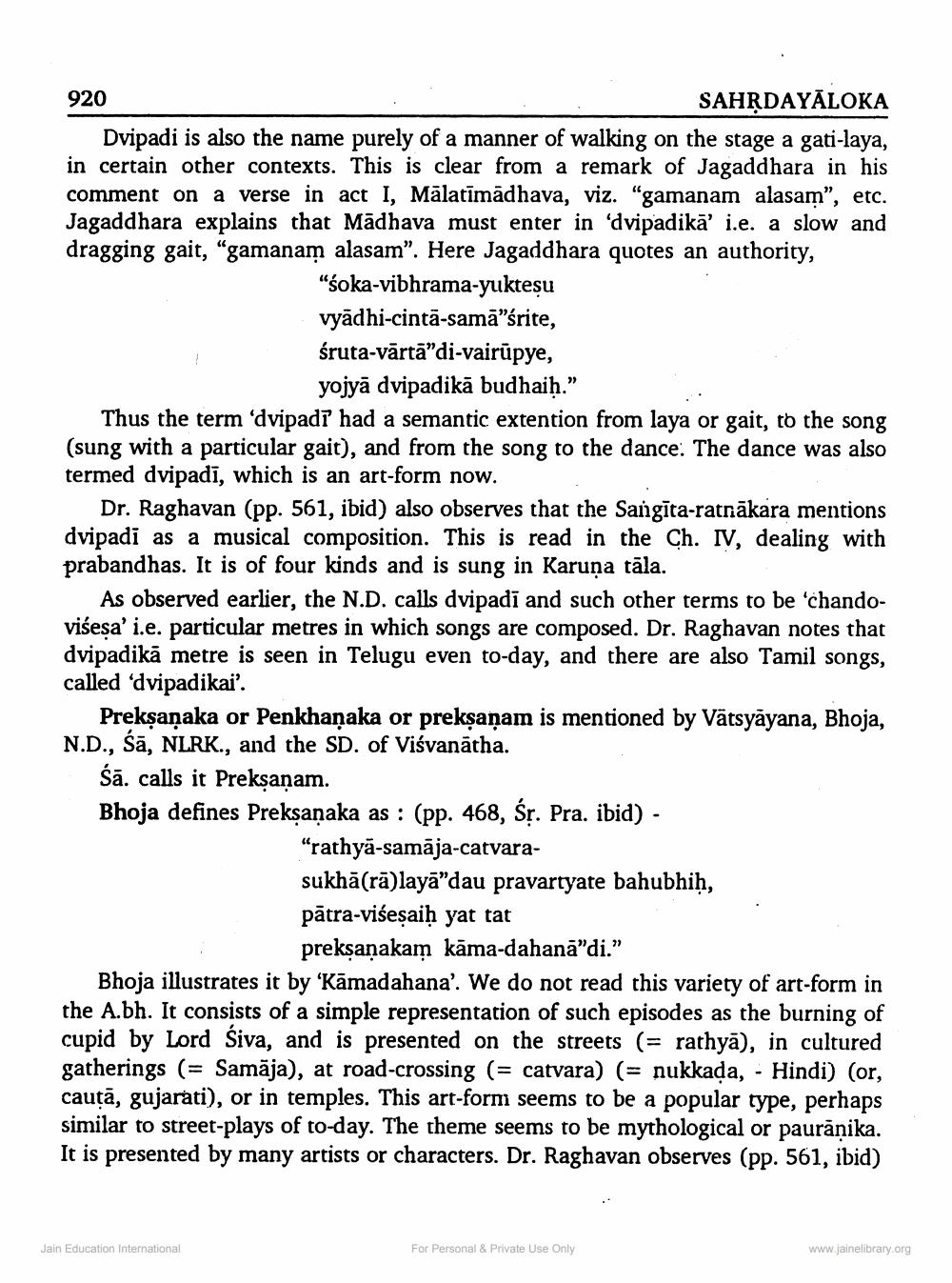________________
920
SAHRDAYĀLOKA Dvipadi is also the name purely of a manner of walking on the stage a gati-laya, in certain other contexts. This is clear from a remark of Jagaddhara in his comment on a verse in act I, Mālatīmādhava, viz. "gamanam alasam", etc. Jagaddhara explains that Mādhava must enter in 'dvipadikā' i.e. a slow and dragging gait, "gamanam alasam". Here Jagaddhara quotes an authority,
"soka-vibhrama-yuktesu vyadhi-cintā-sama"śrite, śruta-vārtā"di-vairūpye,
yojyā dvipadikā budhaiḥ." Thus the term dvipadi had a semantic extention from laya or gait, to the song (sung with a particular gait), and from the song to the dance: The dance was also termed dvipadī, which is an art-form now.
Dr. Raghavan (pp. 561, ibid) also observes that the Sangīta-ratnākara mentions dvipadi as a musical composition. This is read in the Ch. IV, dealing with prabandhas. It is of four kinds and is sung in Karuna tāla.
As observed earlier, the N.D. calls dvipadi and such other terms to be 'chandovišesa' i.e. particular metres in which songs are composed. Dr. Raghavan notes that dvipadikā metre is seen in Telugu even to-day, and there are also Tamil songs, called 'dvipadikai'.
Preksaņaka or Penkhaņaka or preksaņam is mentioned by Vätsyāyana, Bhoja, N.D., Sā, NLRK., and the SD. of Viśvanātha.
Śā. calls it Prekṣaṇam. Bhoja defines Prekṣaṇaka as : (pp. 468, śr. Pra. ibid) -
“rathya-samāja-catvarasukhā(rā)layā”dau pravartyate bahubhiḥ, pātra-viseșaiḥ yat tat
prekşanakam kāma-dahanā”di.” Bhoja illustrates it by 'Kāmadahana'. We do not read this variety of art-form in the A.bh. It consists of a simple representation of such episodes as the burning of cupid by Lord Siva, and is presented on the streets (= rathyā), in cultured gatherings (= Samāja), at road-crossing (= catvara) (= nukkada, - Hindi) (or, cautā, gujarati), or in temples. This art-form seems to be a popular type, perhaps similar to street-plays of to-day. The theme seems to be mythological or paurāņika. It is presented by many artists or characters. Dr. Raghavan observes (pp. 561, ibid)
Jain Education International
For Personal & Private Use Only
www.jainelibrary.org




